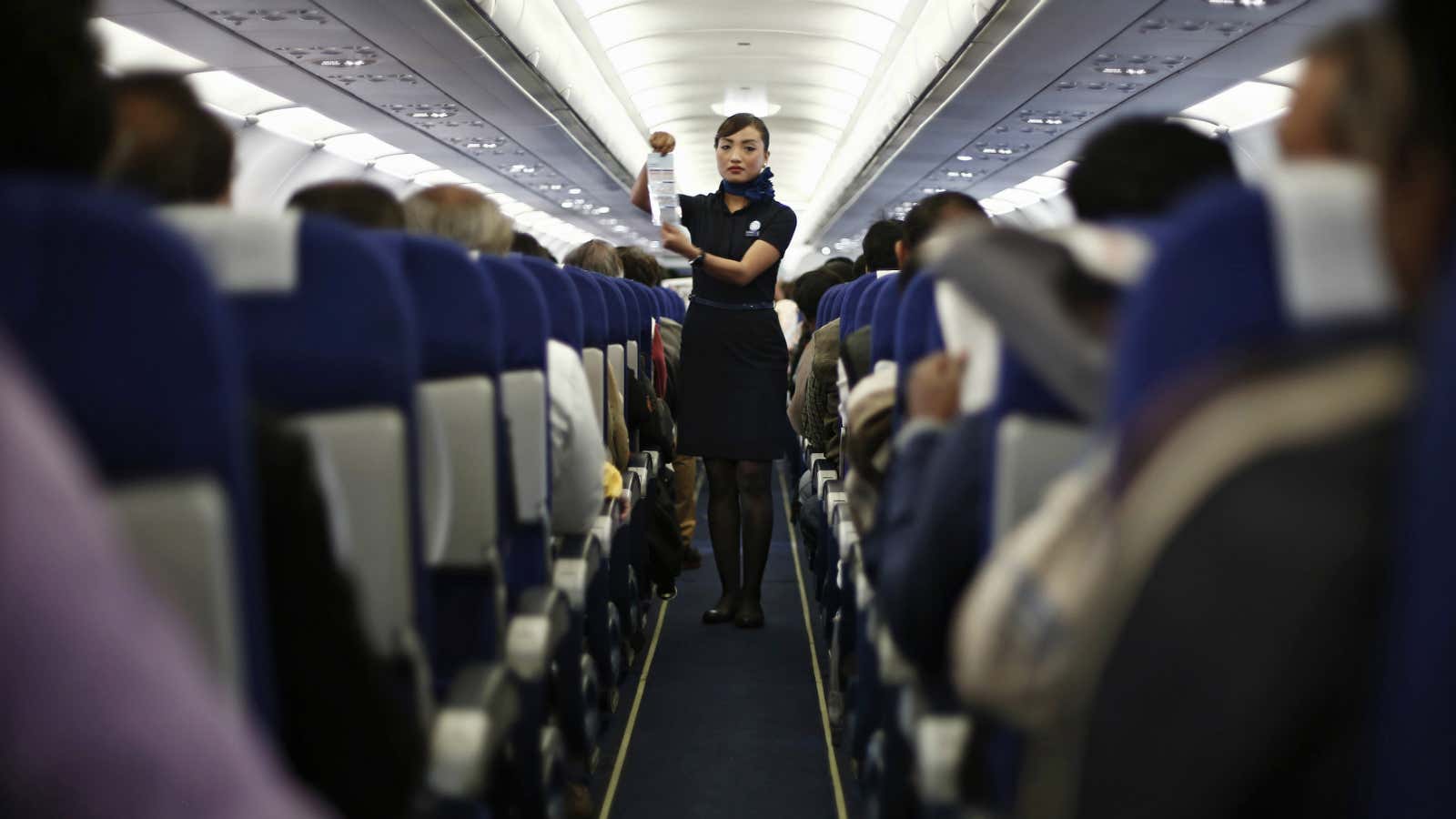India’s aviation sector has faced the same issues for years but failed to find a solution.
Over the last one month, two of the country’s largest airlines have faced mounting pressure from a depreciating rupee and the resultant surge in fuel prices.
India’s biggest airline by market share, IndiGo, saw net profit nosedive 97% year-on-year to Rs28 crore ($4 million) in the April-June quarter of the financial year 2019. The company’s fuel expenses alone rose 54% year-on-year.
Jet Airways, on the other hand, is struggling to keep flying. The company reportedly plans to lay off employees. On Aug 09, it indefinitely deferred the announcement of its financial results, which has led to an audit by sector regulator Directorate General of Civil Aviation.
All this comes after the airline posted a loss of Rs1,360 crore for the January-March quarter of 2018. “Financial performance…was weaker due to the continuing increase in price of Brent fuel without a corresponding increase in airfares, as well as mark-to-market adjustments due to a weaker rupee,” Jet Airways CEO Vinay Dube had said on May 23.
And on Aug. 14, budget-carrier SpiceJet posted a net loss (pdf) of Rs38.1 crore year-on-year for the June quarter citing the same reasons.
Analysts, however, say airlines can’t keep blaming the macro-economy for everything.
If past examples are anything to learn from, they should have been better prepared to handle such an unforeseen situation, analysts say. After all, fuel prices and rupee volatility were among the top reasons for one of the biggest aviation disasters of recent times: the shutdown of Vijay Mallya-owned Kingfisher Airlines in 2012.
The root cause for these troubles, according to experts, is airlines’ inability to balance volume and value.
“Over time, checks and balances should have been built,” a Delhi-based aviation analyst said, requesting anonymity. “They are not even sure of whether they want more volume or should they concentrate on a feasible plan that will help them keep their house in order.”
Passsengers or profits?
India’s airlines have been trying so hard to capture market share that they’ve lost focus on making money.
“Indian aviation companies have been unable to value sustainability over volumes. Choosing profitable routes would have made the losses less pinching,” said Ashish Nainan, research analyst with CARE Ratings.
A lot has changed since Kingfisher Airlines went bust in late 2012. The demand has grown faster than supply, but airlines haven’t been able to cash in. For instance, while demand surged by 17.6% year-on-year in June 2018, carriers remained obsessed with promotional discounts. On Aug. 11, Jet announced an up to 30% discount on its international routes; Air India and GoAir followed suit.
“When you launch something, competitive fares make sense. But there has to be a point beyond which you can’t go. And for established brands, being unable to decide that limit is worrisome,” the aviation analyst said.
At a time when inflation is high and most global factors unfavourable, established players must stop haggling for market share. “You need to choose routes that are most profitable. Else, you should have the financial bandwidth to keep pouring money. If you have a sizeable market share, why should you haggle for an extra 1-2%?” asked Nainan.
Besides, the companies have also failed to put their own houses in order.
Hedging matters
On Aug. 14, the rupee touched the 70-mark against the US dollar.
Many sectors have somewhat learned to deal with such circumstances.
Most IT outsourcing companies, for instance, get over 80% of their revenue from overseas. Yet they have devised solid hedging practices, which partially protect them against sharp currency movements.
The aviation sector, however, hasn’t done much about it. “No airlines company has been able to devise a credible currency policy till date,” the aviation analyst said.
The problem is less chronic for companies operating on international routes as remittances are in dollars. “But the domestic routes are a problem and companies that have more domestic routes need to think of a policy,” Subrata Ray of ICRA said.
